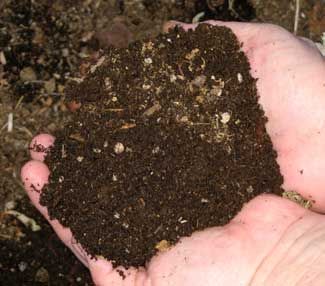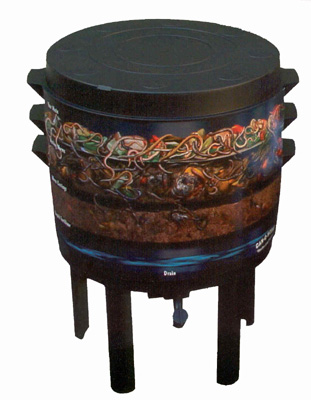Worm Compost

In your reading about compost and composting, you may have come across the phrase ‘worm compost’ and wondered what it meant.
After all, worm compost is not something that’s generally available from compost suppliers, like mushroom compost or mushroom and manure compost (see our range of composts here). So what is it, and how do you make it?
Worm compost is made in a wormery, a small composter, which usually has two compartments, one for composting, and one for collecting liquid. It is a good way to convert kitchen waste into compost, but cannot deal with large quantities. The worms used in wormeries are often called tiger worms or red worms, and are not the same as earthworms.
Ideal conditions for a wormery
 Wormeries need to be kept at temperatures of between about 18-25 degrees, or the worms get inactive. You therefore need to keep it in a shed or sheltered area of the garden, where it won’t get too hot or cold. Worms do not like being in acidic conditions, or being waterlogged, so you do need to keep a careful eye on them. Although you can keep a wormery in the kitchen or utility room, it can smell a bit if left to itself for too long, and you may prefer not to risk having worms on your kitchen floor.
Wormeries need to be kept at temperatures of between about 18-25 degrees, or the worms get inactive. You therefore need to keep it in a shed or sheltered area of the garden, where it won’t get too hot or cold. Worms do not like being in acidic conditions, or being waterlogged, so you do need to keep a careful eye on them. Although you can keep a wormery in the kitchen or utility room, it can smell a bit if left to itself for too long, and you may prefer not to risk having worms on your kitchen floor.
Setting up and using your wormery
When you first get your worms and wormery, add a layer of old compost to the bottom to give the worms somewhere to live. Add your worms, then top with no more than 8-10cm of kitchen waste, and leave it for about a week before adding anything else. You will get best results from adding little and often, and chopping your waste into small pieces. If the waste is not being eaten, don’t add any more for a while, until the worms are ready. You can give them a wide range of food:
- Most raw vegetables, although onions and shallots are best cooked first;
- Any kind of cooked vegetables;
- All fruit except citrus peel, which is too acidic;
- Tea bags, egg shells, coffee grounds, and small amounts of bread;
- A small amount of newspaper or shredded paper;
- Small amounts of soft green garden waste.
You should only add water if the wormery appears dry. When the wormery is full, you can empty it. Use the top 10-12cm to restart your wormery, as this is where most of the worms will be. Remove the rest of the worm compost and use in in your garden, making sure that it doesn’t contain many worms. Drain off the liquid regularly, and use it diluted about 1 in 10 as a liquid fertiliser. If a wormery is your only composter, you will probably also need to buy compost for gardening, but it does help to recycle your kitchen waste.